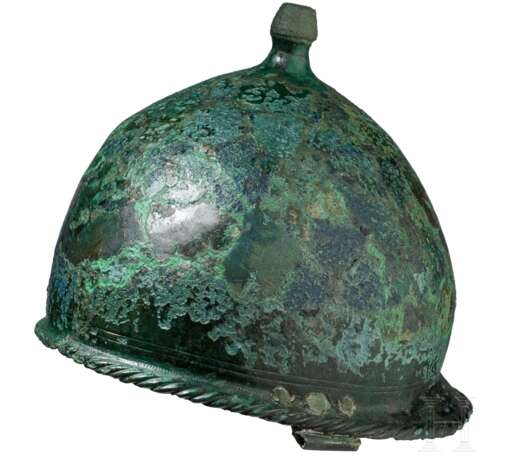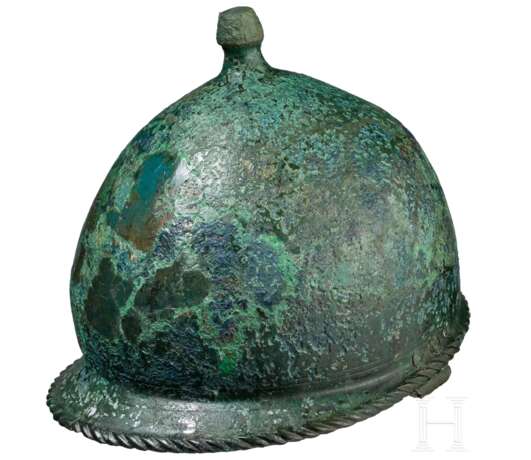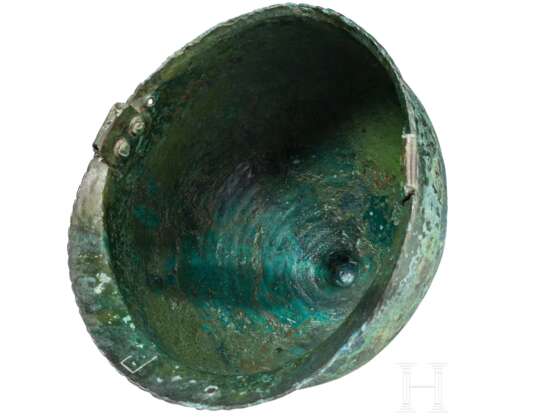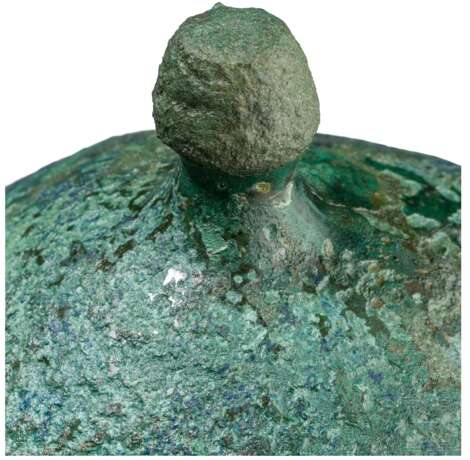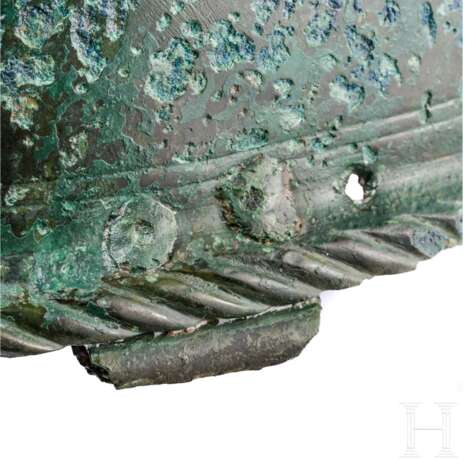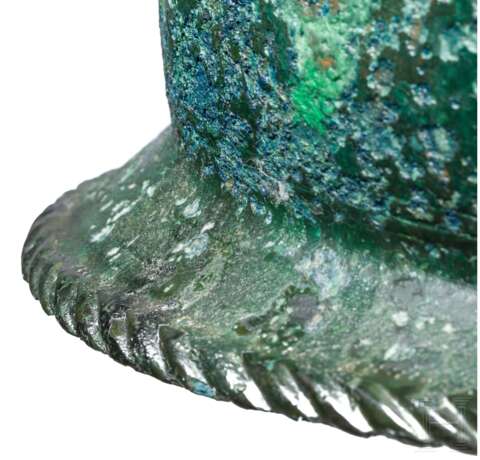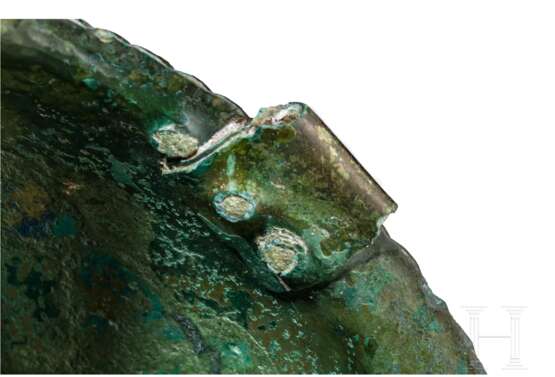ID 986928
Лот 5060 | Römischer Bronzehelm vom Typ Montefortino, 2. Jhdt. v. Chr.
Оценочная стоимость
€ 8 000
Oberfläche an vielen Stellen mit deutlichen Korrosionsspuren. Randpartie großteils mit erheblich besser erhaltener Oberfläche als in der Mitte der Kalotte. Diese partiell zerscherbt und fachmännisch wiederzusammengefügt. Länge 25,3 cm, Breite 22 cm, Höhe ca. 21 cm.
Provenienz: Aus schweizer Sammlung G. B., aufbewahrt in Südwestdeutschland, 2021 im Tausch aus litauischer Privatsammlung (A. V.) erworben, dort seit über zehn Jahren in Besitz. Vom Vorbesitzer im litauischen Kunsthandel erworben.
A Roman bronze helmet of the Montefortino type, 2nd century B.C.
Republican helmet of Etruscan-Italian style with knob-shaped finial and roped edge, as used by Roman legions from around 200 BC until the mid-1st century BC. Knob and bowl made of one piece as usual for Italic helmets. Nearly hemispherical bowl with conical finial at top. The distinct "roped edge" with outward turn and extending at rear to form a short, slightly sloped neck-guard with a maximum width of 3 cm. The roped edge surmounted by a stamped band of double dots. Slightly above, near the edge, two parallel horizontal lines extending around the perimeter. In the centre of the neck-guard an elongated crescent-shaped field framed by two lines, divided by lines on the inside and stamped within the fields. In the centre of the neck-guard the typical central perforation (rivet hole?). Three rivets in the middle of either side between the roped edge and dotted band, the two rear rivets serving to fasten a sheet metal tab, below with an outward facing sleeve. The tab probably wasn't a hinge, but held a leather strap (cheekpieces are not known from any context, not even from grave finds). The function of the third (front) rivet hole, on one side still with the preserved rivet, is unknown (additional fastening of a helmet lining?). An Old Hispanic letter carved on the inside of the neck-guard to the right of the central perforation (B or P from the Eastern Iberian alphabet of the 2nd - 1st century or the eastern variant of the Celtiberian alphabet, respectively). Having said that, it is possible that the present helmet fell into the hands of an Iberian warrior or belonged to an Iberian warrior serving in the Roman army. The present helmet is likely associated with the Roman Conquest of the Iberian Peninsula in the 2nd century BC.
Surface in several places with distinctive signs of corrosion. The exterior much better preserved around the edge than at the centre of the bowl. The latter partially shattered and professionally re-assembled. Length 25.3 cm, width 22 cm, height approx. 21 cm.
Provenance: From the Swiss G.B. Collection, stored in southwestern Germany, acquired in 2021 in exchange from a Lithuanian private collection (A.V.) where it had stayed for over ten years. Acquired from the previous owner in Lithuanian art trade.
Condition: III +
| Место происхождения: | Римская империя |
|---|
| Место происхождения: | Римская империя |
|---|
| Адрес торгов |
Hermann Historica Bretonischer Ring 3 85630 Grasbrunn / München Германия | ||||||||||||||
|---|---|---|---|---|---|---|---|---|---|---|---|---|---|---|---|
| Предосмотр |
| ||||||||||||||
| Телефон | +49 (0)89 5472 649 0 | ||||||||||||||
| Факс | +49 (0)89 5472 64999 | ||||||||||||||
| Комиссия | 25 % | ||||||||||||||
| Условия использования | Условия использования | ||||||||||||||
| Часы работы | Часы работы
|
